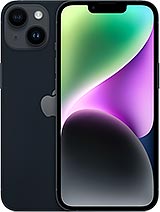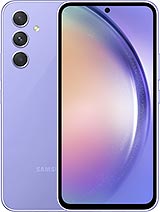
The iPhone 15 was a watershed moment for the vanilla series – it got a high-resolution camera for the first time, adopted the Dynamic Island from the Pro series (but not the refresh rate) and switched over to USB-C. Even though it’s a 2.0 port for data transfers, it still supports video out.
The new 48MP main camera now has 2x in-sensor zoom and produces really good results. A 2x mode can also be used for portraits, which turn out quite nice too (though we like the 1x portraits better).
There are a lot of good reasons to jump to the iPhone 15, especially if you have an older iPhone and have no intention of switching to Android. Despite being the vanilla model, this one carries flagship pricing, but the small discount from Amazon makes it a bit easier to swallow.
You could, of course, go for the larger iPhone 15 Plus . This one has the same advantages as the 15, but it’s bigger with a 6.7” display and a 4,383mAh battery. The endurance on this one is quite good. That said, no optical zoom and only 128GB storage on a €1,000+ phone can be hard to justify.
You may want to have a look at the older iPhone 14 and 14 Plus. We already listed all the reasons that the 15-series models are better, but here is one good reason to get the 14 instead – money.
The iPhone 14 is €110 cheaper than the equivalent 15 model, the iPhone 15 Plus is €195 cheaper. With that kind of savings, maybe it’s okay to stick with Lightning and a 12MP camera for a few more years.
The Poco F5 was one of the highlights of 2023. Its Snapdragon 7+ Gen 2 punched above its weight and it’s not a lot of weight (metaphorically speaking), the phone is down to just €365.
You also get a rare 12-bit display with Dolby Vision, a 6.67” 120Hz FHD+ AMOLED panel. The camera isn’t amazing with a 64MP main (1/2.0”, OIS) and 8MP ultra wide (120°), but you do get stereo speakers and a 3.5mm headphone jack. Also, a 5,000mAh battery with 67W fast charging (100% in 46 minutes).
The Poco F5 Pro is an upgrade in several categories – higher resolution display (QHD+), more powerful Snapdragon 8+ Gen 1 chip and a 5,160mAh battery with both 67W wired and 30W wireless charging (50% in 32 minutes for the wireless option). You do lose the headphone jack and battery endurance takes a dip. It’s a solid package, but the vanilla F5 offers much better value for money.
If your budget for a new phone is around €550, you should also look at the Nothing Phone (2). It also uses the Snapdragon 8+ Gen 1 and has a 6.7” 120Hz FHD+ display, an LTPO panel this time. And once you’re down gawking at the fancy LED lighting on the back, check out the cameras – the 50MP main has a larger 1/1.56” sensor (and OIS) and the ultra wide also has a 50M sensor (114° lens). The 4,700mAh battery supports both 45W wired and 15W wireless charging. Nothing has promised 3 OS updates (starting with Android 14) and 4 years of security patches.
The Realme 11 Pro and Realme 11 Pro+ are an interesting pair with their stitched (faux) leather back and big round camera islands. The Realme 11 Pro looks pricier than it actually is and has a pretty good 6.7” 120Hz 10-bit display (FHD+) and a Dimensity 7050 chipset.
The Realme 11 Pro+ isn’t all that cheap, but it makes up for it with a 200MP main camera (vs. 100MP on the regular Pro) and the addition of an 8MP ultra wide (112° vs. none on the Pro). Also, while both phones have 5,000mAh batteries, the Pro+ model charges at 100W instead of 67W. This means a 15 minute charge gets it to 63%, while the Pro gets up to 42% in the same amount of time.
The Samsung Galaxy A54 will be replaced by the A55 soon, but it is one of the best 2023 mid-rangers and over time it has fallen to a really good price of €350 (€400 if you want the 256GB model, but you may be better off with a microSD card instead). This phone has a 6.4” 120Hz FHD+ OLED display, an Exynos 1380 chipset and a 50MP main camera (1/1.56”, OIS) and 12MP ultra wide (123°). The 5,000mAh battery supports 25W wired only charging.
We may get a commission from qualifying sales.













